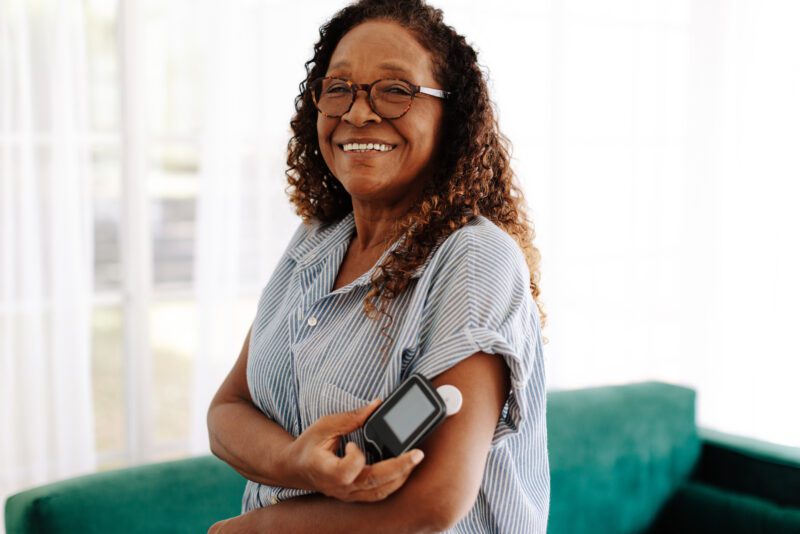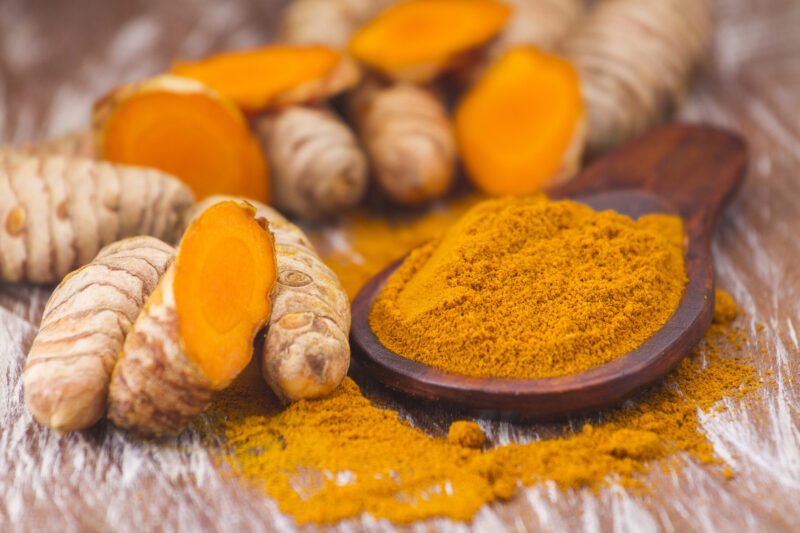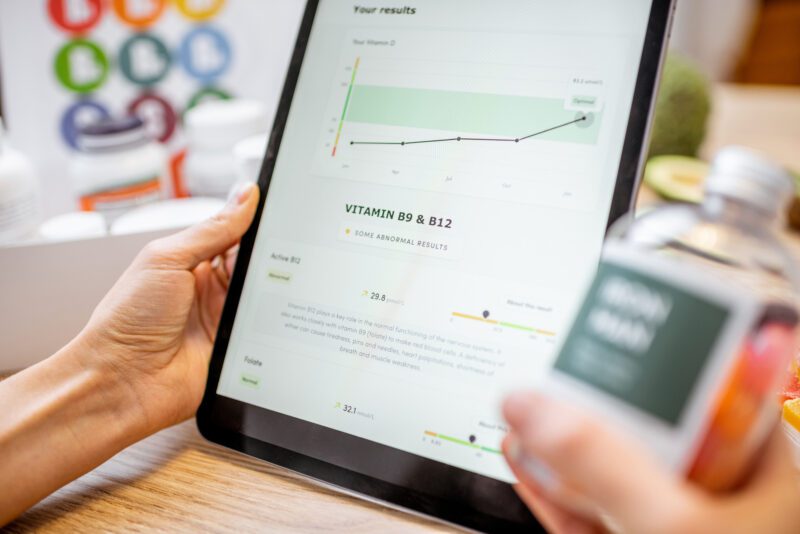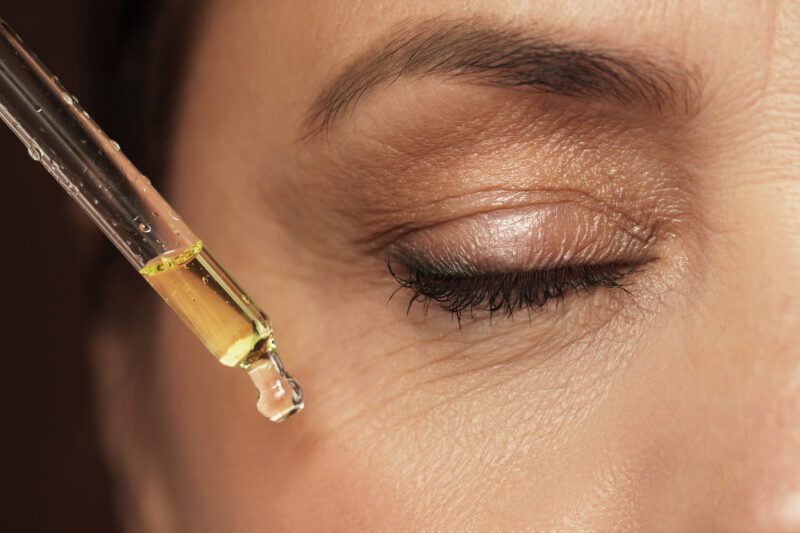By Ella Ceraulo
From vampire facials to collagen banking, variations on biohacking – also known as ‘do-it-yourself biology’ – is a fast-growing biotechnology movement. Emerging in the mid-2000s, biohacking is based on the idea that individuals can ‘hack’ the inner workings of their bodies by making lifestyle changes.1 These can include treatments and supplements that optimise one’s biology.2
As consumer knowledge of bioengineering and biohacking has increased, this movement of leveraging biomolecular techniques within the personal care market has become significantly cheaper and more widely available. Once reserved for the upper echelons of society, increased access to information online has made senescence, epigenetics, and microbiome (biohacking practices) more ubiquitous in our day-to-day vocabulary.
Biohacking practices can encompass anything from gene editing to regenerative medicine.1,2 However most of the focus has been aimed at the development of anti-ageing products and practices.

Longevity
As well as our naturally ageing populations, the idea of living longer and healthier has become a huge focus globally. As such, many researchers have looked towards regions known for particularly large ageing populations, such as areas of Japan and some Mediterranean towns for inspiration. One key factor cited for longevity in this area is the biohacking practice of epigenetics. Moreover, scientists have started to explore how external factors such as diet, exercise and stress can influence biological ageing.3 And with our increasing access to the internet, everyday consumers have also started to explore how they can leverage wearable devices to implement positive changes to their existing diet and exercise regime to slow biological ageing.
Blue Zones

The term ‘Blue Zones’ was first coined in 2004 by journalist and National Geographic Explorer and Fellow, Dan Buettner, and is now a registered trademark (Blue Zones®).4 In the 2000s, Buettner went on an expedition to study longevity in Okinawa, Japan. This led his team of scientists and demographers to travel the world in search of communities where people not only lived longer but also enjoyed a higher quality of life in their old age.4 The areas – which they circled in blue on a map – have since identified as Blue Zones, also include:
– The Barbagia region of Sardinia, Italy
– Ikaria, Greece
– Nicoya Peninsula, Costa Rica
– Seventh-Day Adventists in Loma Linda, California
Buettner deduced that these areas have nine specific lifestyle habits that he’s named the Power 9® and can be roughly categorised into four areas relating to diet, movement, community connection, and personal outlook.5 As well as people adopting some lifestyle habits synonymous with blue zone living, their reach has gone one step further. Coffee, tea, and even honey grown in the Nicoya Peninsula and other Blue Zones can be purchased online.6 Furthermore, ingredients grown in Blue Zones have become popular in personal care formulations.

Curcumin, found in turmeric, has historically been used to help heal wounds by decreasing inflammation and oxidation.7 Turmeric can also be grown in Okinawan, Japan, and its anti-inflammatory properties have helped it become a popular ingredient in anti-ageing formulations.7 In fact, other Blue Zone ingredients have caught the eye of the high-end French brand, Chanel. In 2017, they launched their Blue Serum, containing coffee from Costa Rica, lentisk gum from Greece and olives from Sardinia.8 Coffee was chosen for its anti-inflammatory attributes, lentisk gum for its high concentration of polyphenols, essential fatty acids, and olives for oleanolic acid. Products containing a high concentration of polyphenols are known to strengthen and fortify the skin barrier, while their natural fatty acids provide nourishment and replenish the skin.9
Wearable Devices
There’s been a rise in the number of people using smartwatches, with Global Digital Reports indicating almost 30% of global internet users aged 16-64 own a smartwatch or wristband.10 Often, these are used to track their sleep habits, heart rate, and exercise metrics across the day. Stick-on blood glucose monitors have also become popular through the rise of self-proclaimed ‘health science company’ ZOE, which allows users to gain knowledge of their unique gut, blood fat, and blood sugar responses to certain foods. Research carried out on the ‘ZOE METHOD’ has even been published in Nature, where scientists demonstrated that following a personalised diet led to some improvements in cardiometabolic health compared to standard dietary advice.11
For individuals who wish to have a go at biohacking their biological clock, these findings are somewhat concurrent with the idea of environmental impacts on epigenetics and the slowing of ageing. Wearable devices have also encouraged a more holistic way for people to look at their health; considering how diet impacts sleep, recovery, and even appearance is something that is more easily accessible for consumers who use wearable devices. However, it is important to note that although the data about negative effects is still limited, concerns have been raised about the instances of maladaptive health behaviours or psychological stress that the ubiquity of these devices may have caused.12

Molecules for Longevity
As well as external factors, it’s also important to look inside when considering how humans are impacted by ageing. And as we have discussed, when it comes to biohacking, lifestyle changes are one of the key ways to hack our biological clock – but what is it that we should be considering?
Sirtuins and NAD+
Two of the key players in the regulation of cellular processes related to longevity and ageing are sirtuins and nicotinamide adenine dinucleotides (NAD+). Sirtuins, a family of proteins that function as NAD+-dependent deacetylases, play a crucial role in cellular regulation, influencing various biological processes related to ageing and longevity.13,14 These include DNA repair, metabolic regulation, inflammation reduction, and mitochondrial function. NAD+ is a critical coenzyme found in all living cells due to its involvement in cellular metabolism and energy production.15 Levels of NAD+ decline with age, contributing to a decrease in energy metabolism, sirtuin activation, cellular senescence, and oxidative stress reduction.14,15
As there is a key interplay between these two types of molecules, they are both key to promoting longevity. Sirtuins rely on NAD+ for their activity, and the molecules work together to enhance cellular health and function. Improvements in key functions mean that sirtuins and NAD+ collectively contribute to increased lifespan and healthier ageing; and by altering our day-to-day habits, we can hack these functions further to improve lifespan and live longer.16 Curcumin, a natural anti-inflammatory molecule found in turmeric, has been shown to activate sirtuins in the body.16 Additionally, research has shown that calorie restriction and intermittent fasting can also increase NAD+ levels to activate sirtuins and promote longevity. Vitamins and supplements can also be taken to promote NAD+ concentrations. Precursors such as nicotinamide mononucleotide (NMN) have also been studied and are available to purchase; their supplementation can also lead to increased sirtuin activation.17
In addition to using supplements to activate sirtuins and NAD+, companies such as SILAB have been working on active ingredients for personal care products that work in a similar way. SENEVISIUM® is an active ingredient extracted from Gingko biloba leaves. By circumventing the deleterious immunoevasion strategies put in place by senescent fibroblasts with age, SENEVISIUM® reactivates their natural elimination by the immune system and preserves matrix synthesis and epidermal renewal. The skin thus recovers its density and elasticity for an anti-wrinkle and radiance-boosting action.
Hormones
Hormones play a vital role in the human body, acting as chemical messengers that regulate numerous physiological processes and maintain homeostasis.18 Produced by various glands in the endocrine system, hormones travel through the bloodstream to target organs and tissues. The most well-known and important hormones include:
· Insulin, produced by the pancreas to regulate blood sugar levels;
· Thyroid hormones, produced by the thyroid gland to control metabolic rate;
· Cortisol, produced by the adrenal glands to help the body respond to stress.
The sex hormones, oestrogen and testosterone, are produced by the ovaries and testes respectively and are critical for reproduction. Additionally, melatonin, produced by the pineal gland is key for our bodies to regulate sleep-wake cycles. These hormones work together with many others to ensure bodily systems function smoothly and efficiently.18
As such, thyroid hormones and insulin tend to have the biggest impact on ageing. Blood sugar and metabolic rate are closely linked to diet,19 which as discussed above, has a key effect on epigenetics; therefore, it’s not unreasonable to suggest that fluctuations in insulin and thyroid hormones will impact biological ageing. Additionally, high cortisol levels have been shown to accelerate some symptoms of ageing.20

Hormones and the Menopause
As people approach menopause, oestrogen and progesterone – produced by the ovaries – play a pivotal role, causing fluctuations that eventually lead to an overall decline in their concentration. This hormonal shift leads to the cessation of menstrual cycles and can additionally cause various symptoms such as hot flushes, mood swings, and sleep disturbances. Decreased oestrogen levels can also impact bone density, cardiovascular and metabolic health and many factors related to the skin.21
As we age, slowed cell renewal and growth is one of the biggest factors impacting the skin. Oestrogen is vital for regulating growth hormone (GH) secretion, which is directly related to the production of collagen. When levels of oestrogen drop during menopause, the availability of GH decreases and with it, so does collagen production. This is why many people experience thinner, drier and reduced elasticity in their skin.22,23 Furthermore, studies have shown type I and III skin collagen can decrease by as much as 30% in the first five years after menopause.23 This means that the effects of ageing tend to be more abruptly noticeable to individuals in menopause than those experiencing the regular impacts of ageing. One biohacking method used to help avoid this is a phenomenon known as collagen banking. This is where individuals start taking collagen supplements, or start treatments such as microneedling or PRP therapy, at a younger age to maintain and ‘store’ collagen when our bodies are in their prime collagen-producing years.24
Moreover, our longer life expectancy and ageing populations mean that people who go through menopause are living with the effects of peri/menopause for longer – 100 years ago, people affected by menopause didn’t live long enough to experience a stage of their life where they would notice the symptoms. Now, it’s estimated that the average person who goes through menopause spends more than one-third of their life in a post-menopausal state.25
The personal care industry has historically collated these symptoms with general ageing; however, in recent years the focus on menopausal forward skincare has been on the rise.26 Many companies have emerged with a sole focus on producing products that help to manage and target the symptoms of menopause. One example is Stripes, a US-based skincare and supplements brand founded by actor Naomi Watts. After experiencing early menopausal symptoms herself, Watts noticed a gap in the market – both in terms of products and knowledge – to help manage the effects.27 The ‘pro-ageing’ range features solutions to help manage the changes menopausal people experience in their skin, body and mind. They also have sections of the website dedicated to helping individuals find the right solution for their symptoms and regular Q&As with medical professionals.
Additionally, from a medical standpoint, a lack of information relating to the effects of hormones on menopause can lead to a large amount of ‘noise’ or uncertainty around whether biohacking treatments such as hormone replacement therapy (HRT) are suitable for individuals. Due to some side effects of HRT, it has become villainised as a method of menopause regulation, but for some, it may be the only option and the benefits can greatly outweigh the risks.28,29 It’s also vital to note that menopause can last longer based on factors such as race and ethnicity; there’s no one-size-fits-all. However, studies have shown that modifications to factors, such as diet, microbiome, and use of HRT (dependent on the individual in question) can help to reduce the risks of adverse cardiometabolic effects.25
Ageing Gracefully
The rise of biohacking reflects a growing trend toward how personalised health and longevity have interwoven into the personal care market. By leveraging advancements in biotechnology, individuals now have greater access to tools and knowledge to empower them to explore novel anti-ageing techniques, wearable health devices, and health-forward skincare routines. The concept of Blue Zones and the integration of biohacking in personal care products further highlight the impact of science-backed information when promoting longevity and quality of life. And as our understanding of hormones and their impact on ageing increases – particularly concerning menopause – managing physiological changes with informed strategies can significantly enhance overall health.
Whether through biohacking, personal care routines, or more simple lifestyle modifications inspired by older populations, the pursuit of a longer and healthier life continues to drive innovation and redefine the boundaries of the markets supplying our ageing consumers.
References
1. Royal Society of Biology. (2023) Focus on: Biohacking, The Biologist. Available at: https://www.rsb.org.uk/biologist-features/focus-on-biohacking [Accessed: June 2024].
2. Medical News Today (2022) Biohacking: What is it, types and hacks to try for beginners, Medical News Today. Available at: https://www.medicalnewstoday.com/articles/biohacking [Accessed: June 2024].
3. Galkin, F., Kovalchuk, O., Koldasbayeva, D., Zhavoronkov, A. and Bischof, E. (2023). Stress, diet, exercise: Common environmental factors and their impact on epigenetic age. 88, pp.101956–101956. doi: https://doi.org/10.1016/j.arr.2023.101956.
4. Blue Zones (2023) History of blue zones, Blue Zones. Available at: https://www.bluezones.com/about/history/ [Accessed: June 2024].
5. Blue Zones (2023) Power 9®, Blue Zones. Available at: https://www.bluezones.com/2016/11/power-9/ [Accessed: June 2024].
6. Blue Zones (2023) Store, Blue Zones. Available at: https://www.thebluezonesstore.com [Accessed: June 2024].
7. Healthline (2024). Turmeric for Skin: Benefits and Risks. Available at: https://www.healthline.com/health/turmeric-for-skin [Accessed: June 2024].
8. Ghanem, K., (2017). Chanel’s New Serum is Our Latest Beauty Obsession, Vogue. Available at: https://en.vogue.me/beauty/chanel-blue-serum-blue-zones/ [Accessed: June 2024].
9. Sun, M., Deng, Y., Cao, X., Xiao, L., Ding, Q., Luo, F., Huang, P., Gao, Y., Liu, M. and Zhao, H. (2022). Effects of Natural Polyphenols on Skin and Hair Health: A Review. Molecules, 27(22), pp.7832–7832. doi: https://doi.org/10.3390/molecules27227832.
10. DATAREPORTAL (2023). Digital 2023: Global Overview Report. Available at: https://datareportal.com/reports/digital-2023-global-overview-report [Accessed: June 2024].
11. Bermingham, K.M. et al. (2024) ‘Effects of a personalized nutrition program on Cardiometabolic Health: A randomized controlled trial’, Nature Medicine [Preprint]. doi:10.1038/s41591-024-02951-6.
12. Kaplan, D.M., Greenleaf, M. and Lam, W.A. (2023). Wear With Care: A Call for Empirical Investigations of Adverse Outcomes of Consumer Health Wearables. Mayo Clinic Proceedings Digital Health, 1(3), pp.413–418. doi: https://doi.org/10.1016/j.mcpdig.2023.06.014.
13. Ziętara, P., Dziewięcka, M. and Augustyniak, M. (2023). Why Is Longevity Still a Scientific Mystery? Sirtuins—Past, Present and Future. International Journal of Molecular Sciences, [online] 24(1), p.728. doi: https://doi.org/10.3390/ijms24010728.
14. Watroba, M. and Szukiewicz, D. (2021). Sirtuins at the Service of Healthy Longevity. Frontiers in Physiology, 12. doi: https://doi.org/10.3389/fphys.2021.724506.
15. Covarrubias, A.J., Perrone, R., Grozio, A. and Verdin, E. (2020). NAD+ metabolism and its roles in cellular processes during ageing. Nature Reviews Molecular Cell Biology, 22(2), pp.119–141. doi: https://doi.org/10.1038/s41580-020-00313-x.
16. Grabowska, W., Sikora, E. and Bielak-Zmijewska, A. (2017). Sirtuins, a promising target in slowing down the ageing process. Biogerontology, [online] 18(4), pp.447–476. doi: https://doi.org/10.1007/s10522-017-9685-9.
17. Shade, C. (2020). The Science Behind NMN-A Stable, Reliable NAD+Activator and Anti-Aging Molecule. Integrative Medicine, 19(1), pp.12–14.
18. Cleveland Clinic (2022). Hormones: What They Are, Function & Types. [online] Cleveland Clinic. Available at: https://my.clevelandclinic.org/health/articles/22464-hormones.
19. Stanhope, K.L. (2015). Sugar consumption, metabolic disease and obesity: The state of the controversy. Critical Reviews in Clinical Laboratory Sciences, [online] 53(1), pp.52–67. doi: https://doi.org/10.3109/10408363.2015.1084990.
20. Stamou, M., Colling, C. and Dichtel, L.E. (2023). Adrenal aging and its effects on the stress response and immunosenescence. Maturitas, 168, pp.13–19. doi: https://doi.org/10.1016/j.maturitas.2022.10.006.
21. National Institute on Aging. (2022). Research explores the impact of menopause on women’s health and aging. [online] Available at: https://www.nia.nih.gov/news/research-explores-impact-menopause-womens-health-and-aging [Accessed Jun. 2024].
22. Welsh, K. (2018). Hormones & The Collagen Quagmire. [online] weloveskin.com. Available at: https://weloveskin.com/dermatology-blog/hormones-and-the-collagen-quagmire [Accessed 4 Jun. 2024].
23. Thornton, M.J. (2013). Estrogens and aging skin. Dermato-endocrinology, [online] 5(2), pp.264–270. doi: https://doi.org/10.4161/derm.23872.
24. Collier, E. (2023). What is collagen banking? | Glowday. [online] www.glowday.com. Available at: https://www.glowday.com/blog/collagen-banking-what-is-it-and-how-do-we-do-it [Accessed 4 Jun. 2024].
25. Bermingham, K.M., Linenberg, I., Hall, W.L., Kadé, K., Franks, P.W., Davies, R., Wolf, J., Hadjigeorgiou, G., Asnicar, F., Segata, N., Manson, J.E., Newson, L.R., Delahanty, L.M., Ordovas, J.M., Chan, A.T., Spector, T.D., Valdes, A.M. and Berry, S.E. (2022). Menopause is associated with postprandial metabolism, metabolic health and lifestyle: The ZOE PREDICT study. eBioMedicine, [online] 0(0). doi: https://doi.org/10.1016/j.ebiom.2022.104303.
26. Haines, A. (2024) Menopause is hot: These beauty brands are supporting women through midlife, Forbes. Available at: https://www.forbes.com/sites/annahaines/2023/04/13/menopause-is-hot-these-beauty-brands-are-supporting-women-through-midlife/ [Accessed: June 2024].
27. Stripes (2024) Founder story, Stripes Beauty. Available at: https://iamstripes.com/pages/founder-story [Accessed: June 2024].
28. Cagnacci, A. and Venier, M. (2019). The Controversial History of Hormone Replacement Therapy. Medicina, [online] 55(9). doi: https://doi.org/10.3390/medicina55090602.
29. NHS (2023). Benefits and risks of hormone replacement therapy (HRT). [online] nhs.uk. Available at: https://www.nhs.uk/medicines/hormone-replacement-therapy-hrt/benefits-and-risks-of-hormone-replacement-therapy-hrt/ [Accessed Jun. 2024].